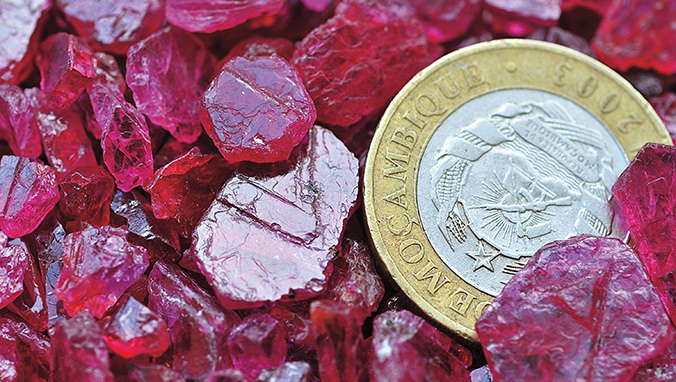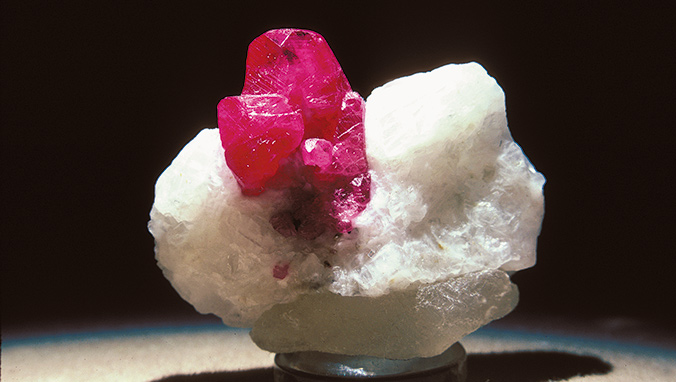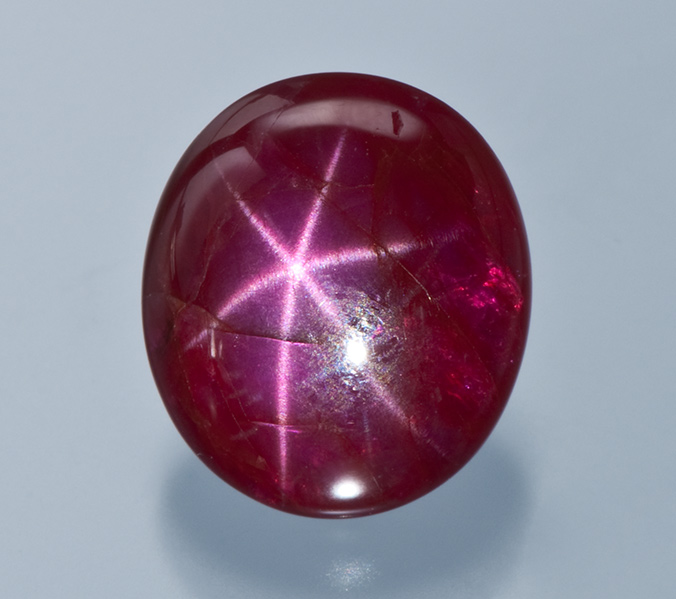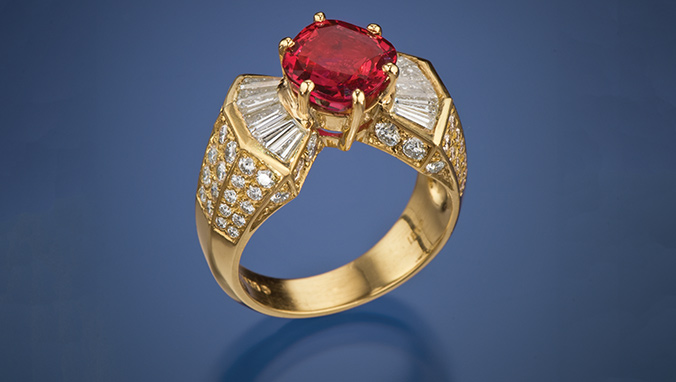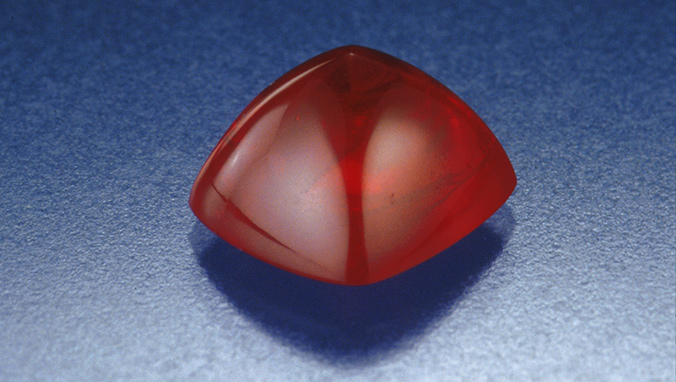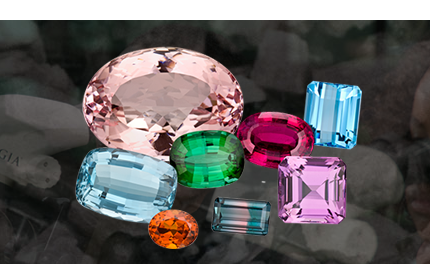Ruby
Oval and Cushion Shapes
Rubies are commonly cut into oval and cushion shapes. This ruby crystal lies in white calcite the color of snow. This sample is more valuable as a crystal than cut for jewelry. - Photo by Robert Weldon/GIA, crystal gift of William F. Larson, right oval cut stone courtesy Edward Boehm
The Star Effect
Long mineral inclusions that intersect or cross each other can create the star effect known as asterism. The star is seen when stones are cut as cabochons. Asterism is rare and only happens in very few stones. - Photo by Robert Weldon/GIA, courtesy Hussain Rezayee, Rare Gems & Minerals
VIEW ALL GEMS



